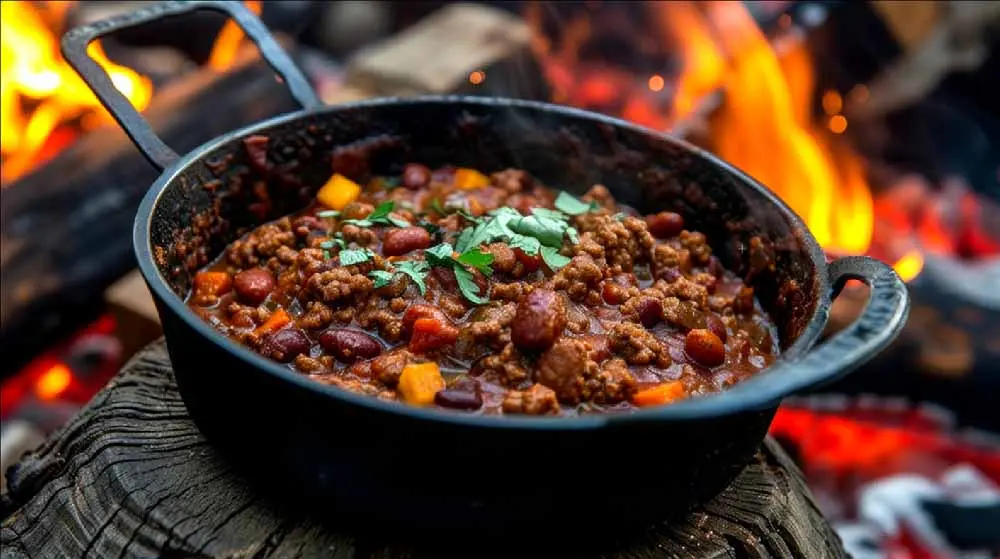
Exploring Good Recipes for Camping Meals
Crafting Culinary Delights in the Wild
As the embers of our campfire flickered under the vast, starlit sky, my companions and I faced a question that often puzzles even the most seasoned outdoor enthusiasts: “What are some good recipes for camping meals?” Far from the conveniences of our home kitchens, cooking in the wild offers both a challenge and an adventure—a chance to fuse simplicity with creativity, transforming basic ingredients into meals that not only nourish but also enhance the outdoor experience.
Embarking on a camping adventure means navigating the complexities of preparing meals in the wilderness. The quest for satisfying, nutritious meals while camping faces several inherent challenges, including the limitations of cooking tools, the need for ingredient preservation, and often, a desire for efficiency after a tiring day of outdoor activities.
Storage and Portability
When selecting ingredients for camping, it’s crucial to choose items that are durable and can handle being stored without refrigeration. This often means relying on preserved or dry goods like canned foods, vacuum-sealed items, and spices. The advantage here is twofold: these ingredients are less likely to spoil and are typically easier to transport. For example, canned beans or vegetables, pouches of pre-cooked grains, and cured meats are all excellent choices because they withstand varied weather conditions and do not require refrigeration, making them ideal for extended trips away from modern conveniences.
Cooking Equipment
The typical camping cooking setup usually consists of minimal equipment—most often just a camp stove or an open fire, along with basic cookware like a pot or a pan. This simplicity dictates the type of recipes that are feasible in a camp setting. Meals need to be straightforward, requiring minimal steps and utensils to prepare. This setup challenges campers to think creatively about how to use a single heat source for a variety of meals, from boiling water for pasta to simmering a pot of chili.
Preparation Time
After a day filled with hiking, paddling, or exploring, complex and time-consuming meals are generally unappealing. Campers need recipes that are quick to prepare and require minimal active cooking time. This emphasis on efficiency doesn’t mean sacrificing taste; rather, it highlights the importance of finding a balance between simplicity and flavor. Meals that can be prepared in under 30 minutes or that allow for some level of “set it and forget it” cooking are ideal.
Best Solutions: Campsite Culinary Delights
Given these constraints, certain recipes stand out for their ease of preparation, minimal required ingredients, and adaptability to basic cooking methods. Here are three examples:
- One-Pot Spaghetti:
- Ingredients: Spaghetti, canned tomato sauce, garlic powder, dried herbs, salt, and pre-cooked sausage.
- Method: Start by boiling water in your pot. Add the spaghetti, cooking until al dente. Then mix in the tomato sauce, chopped pre-cooked sausage, garlic powder, and herbs, letting everything simmer together until the flavors blend. The simplicity of using just one pot makes this ideal for camping—less washing up and a hearty meal that satisfies the appetite.
- Campfire Chili:
- Ingredients: canned beans, pre-cooked ground beef, sausage, or turkey, onion powder, chili powder, canned diced tomatoes.
- Method: Combine all the ingredients in a single pot and cook over the camp stove or open fire. The robust flavors of the chili are comforting after a day in the cold, and the one-pot method simplifies cooking and cleaning.
- Foil-Wrapped Fish:
- Ingredients: Fish fillets, lemon slices, herbs, butter or olive oil, salt, and pepper.
- Method: Wrap the fish fillets along with lemon slices, herbs, and a dollop of butter or a drizzle of olive oil in aluminum foil. Place the foil packets on hot coals and cook for about 10 minutes per side. This method is excellent for camping because it requires no pans and minimizes cleanup, while the fish cooks in its own juices, enhancing the flavors.
Each of these recipes demonstrates how to manage the unique challenges of camp cooking. They prioritize minimal prep and cooking times, utilize a single heat source, and call for ingredients that are both portable and non-perishable. By embracing these principles, campers can enjoy delicious and hassle-free meals that contribute to an enjoyable and memorable outdoor experience.
Resources and Tools Required
To implement these recipes effectively, ensure your camping toolkit includes:
- Portable stove or grill
- Lightweight pot and pan
- Cooking utensils (spatula, cooking spoon)
- Cutting board and knife
- Aluminum foil for varied cooking methods
- Cooler for ingredient storage, if necessary
Conclusion: Savoring Simplicity
As the night deepened and our simple feast came to an end, it was clear that great food could be the highlight of a camping trip, transforming it from mere survival to a memorable part of the adventure. The essence of good camping recipes lies not in their complexity but in their ability to bring comfort, warmth, and satisfaction after a day in the wild. With careful planning and a bit of culinary creativity, even the most basic camp kitchen can turn out meals that make a night under the stars feel like a celebration.






